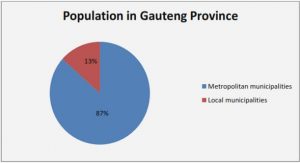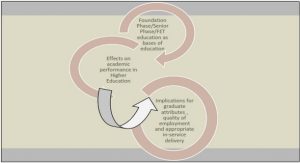Get Complete Project Material File(s) Now! »
Short evolutionary history of becoming human
In order to understand the human story, the grand narrative of the human creative journey, as Fuentes (2017a:16) calls it, it is necessary to recognize that humans are mammals and members of a specific mammalian order (primates). Human beings are also members of a specific subset of primates called “anthropoids” (monkeys, apes, and humans). Humans are also part of a specific subset of anthropoids called “hominoids” (apes and humans). Consequently human beings are members of a specific subset of the hominoids called the “hominins,” which are humans, their ancestors, and a set of extinct humanlike beings. Fuentes (2017a:16) uses the image of a big branching bush with millions of branches, twigs, and leaves to describe the evolutionary history of life on this planet. Close evolutionary relatives are those twigs and leaves closest to one another. As such, humans do share a branch with monkeys, but our respective twigs split off in different directions about 25 to 30 million years ago. Therefore, all commonalities humans have with all monkeys are shared traits that were present in the original branch from which both our lines (the twigs) arose. If one takes into account the closest primate relatives to humans, the African apes (gorillas and chimpanzees), the human lineage split off from a common ancestor about 7 to 10 million years ago (Fuentes 2017a:16). Other primates do create new ways to meet life’s challenges and invent new ways to relate to one another. These ways, however, never reach anything near the extent to which human beings do this. It is well known that the anthropoids exhibit complex social lives. The hominoids from which both the human and the ape lineages derived probably had even a greater degree of social complexity. In turn, Fuentes (2017a:23) mentions that the hominins, arising from the hominoids and eventually giving rise to the human lineage, followed the trend toward social complexity and began creating social niches, tools, and social traditions.
Empathy
According to Darwin (cf. De Waal 2005a:248), “[a]ny animal whatever, endowed with well-marked social instincts… would inevitably acquire a moral sense or conscience, as soon as its intellectual powers had become as well developed, or nearly as well developed, as in man”. Animals helping one another is not a new observation. In his publication, Our Inner Ape, De Waal (2005a:250) asks the following question: “If all that matters is survival of the fittest, shouldn’t animals refrain from anything that fails to benefit themselves? Why help another get ahead?” He goes on to say that there are two main theories in this regard. Firstly, such behaviour has evolved in order to help genetically related individuals, which results in the promotion of the helper’s own genes. A second theory states that animals engage in helping behaviour for the sake of mutual aid. Both parties stand to gain if animals help those who return the favour. According to De Waal (2005a:251), both theories involve the evolution of behaviour, but the actual motives remain unclear. Motives sprout from the present, whereas evolution is dependent on the success of a trait over many years. Even though altruistic behaviour is common in humans and other social animals, De Waal (2005a:252) still argues that the sources of altruistic tendencies are mutuality and the helping of kin. In early human societies, “survival of the kindest” played a remarkable role in aiming at family and potential reciprocators (De Wall 2005a:253). Over time, sympathetic behaviour towards others became an objective, a vital aspect of religion and the core of human morality. By encouraging us to engage in neighbourly love, feeding the poor and so forth, Christianity as a religion enforces kindness, which is already part of our humanity (De Waal 2005a:253). Religions are thus merely emphasizing established capacities.
CHAPTER 1 IMAGINATION, RELIGION, AND MORALITY
1.1 INTRODUCTION
1.2 PROBLEM STATEMENT
1.3 LITERATURE REVIEW AND RESEARCH GAP
1.4 METHODOLOGY
1.5 RESEARCH PROGRAMME
CHAPTER 2 THE EVOLUTION OF THE DISTINCTIVE HUMAN IMAGINATION
2.1 INTRODUCTION
2.2 STEVEN MITHEN: SEVEN STEPS IN THE EVOLUTION OF THE HUMAN IMAGINATION
2.3 AGUSTIN FUENTES: THE EMERGENCE OF IMAGINATION AND THE HUMAN NICHE
2.4 CONCLUSION
CHAPTER 3 SYMBOLIC THOUGHT AND RELIGIOUS AWARENESS
3.1 INTRODUCTION
3.2 DEFINING “RELIGIOUS”?
3.3 EVIDENCE OF SYMBOLIC BEHAVIOUR AND RELIGIOUS EXPERIENCE
3.4 THE HUMAN IMAGINATION, SYMBOLIC REALITY, AND NICHE CONSTRUCTION
3.5 THE EVOLUTION OF RELIGION
3.6 CONCLUSION
CHAPTER 4 THE ORIGIN OF MORALITY
4.1 INTRODUCTION
4.2 FRANS DE WAAL
4.3 MICHAEL TOMASELLO
4.4 CELIA DEANE-DRUMMOND
4.5 CONCLUSION
CHAPTER 5 TOWARD AN INTERDISCIPLINARY UNDERSTANDING OF THE ORIGIN OF MORALITY AND RELIGION
5.1 A POSSIBLE PHILOSOPHICAL BRIDGE THEORY INTEGRATING EVOLUTIONARY PERSPECTIVES AND INTERDISCIPLINARY THEOLOGY
5.2 CONCLUSION






